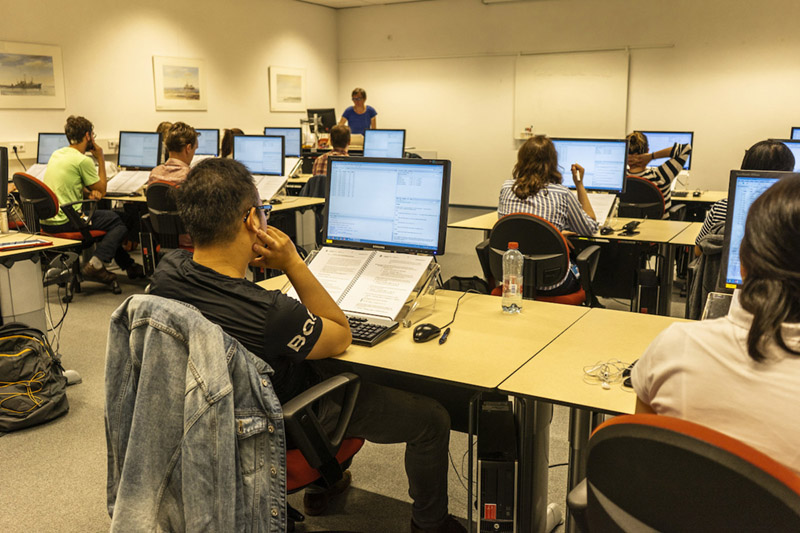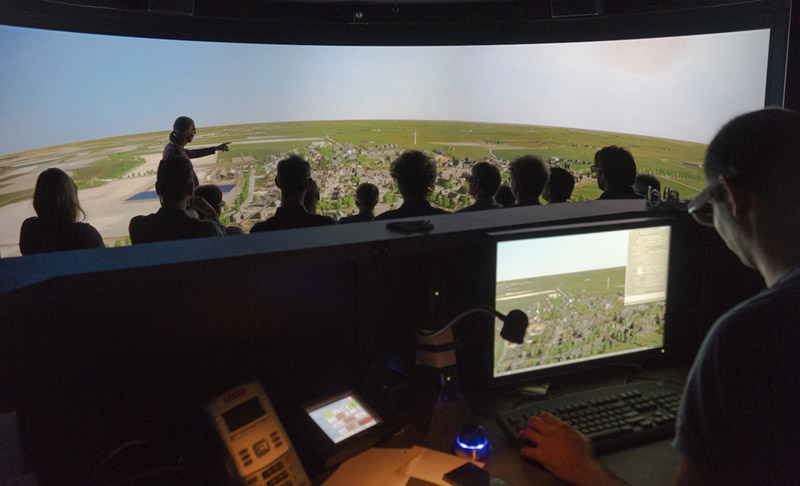waybackmachine
Computers at the uniFrom ZEBRA to
Stella
It’s almost impossible to imagine now, but it wasn’t too long ago that every single calculation at the UG was done with manual calculators that literally had to be hand-cranked. This was during the 1950s.
How different things are now, nearly three quarters of a century later, when computers and digital networks have become commonplace. Very few UG departments have such a tumultuous history as the one that started out as a humble ‘computing department’ and is now known as the CIT, the all-powerful Centre for Information Technology.
The need for fast and large-scale computing power arose in the fifties, when the UG was setting up several new programmes in applied mathematics, applied physics, and applied chemistry. As such, the university needed advanced equipment. It all started with ZEBRA, in 1959.
Supercomputer
ZEBRA was an absolute unit, measuring two metres high and two metres wide. It cost 170,000 guilders, which was an astronomical amount of money at the time. According to UG historian Klaas van Berkel’s calculations, it was eight times the annual salary for a professor. Even Groningen mayor Jan Tuin stopped by the UG’s Mathematical Institute at the Reitdiepskade when the contraption was first started up.
It was the university’s first real ‘supercomputer’ and much faster and more accurate than the manual calculators. In Dutch, the acronym ZEBRA stood for Zeer Eenvoudig Binair Reken Automaat (Very Simple Binary Calculation Automaton). ‘Various problems that until then couldn’t be solved could now be calculated’, writes Jan Kraak in his book Pionieren op het Rekencentrum (Pioneers of the Computing department) on the history of the CIT.
ZEBRA consisted of hundreds of vacuum tubes, which is why it was so big. A noisy cooling system housed in the Mathematical Institute’s basement ensured they didn’t overheat. It was a sensation, writes Kraak, who worked as a programmer at the computing department in 1959.
The machine could do one calculation in 30 milliseconds. While that seems laughable now, it was unbelievably fast at the time. The code was input into the machine using punch tape: long ribbons of paper with holes punched into them. Large calculations required dozens of metres of punch tape. They were a hassle to work with, and to people’s great panic, occasionally got all tangled up and became unreadable.
Transistor
Psychologists, chemists, physicists, and especially astronomers, the latter of whom worked with incredibly complicated calculations, often knocked on the computing department’s door for help. Five years after its introduction, ZEBRA had reached its expiration date, and the UG prepared for a new supercomputer, the TR4, developed by German company Telefunken. The machine was a revolution, since it didn’t use vacuum tubes but transistors, making it a hundred times faster than its predecessor.
The TR4 required a completely climate-controlled room with a consistent air temperature. The older building at the Reitdiepskade couldn’t provide this, and so the computer department moved to a property on the corner of the Nieuwe Kijk in ’t Jatstraat and Grote Appelstraat, which also housed applied chemistry.

That same year, 1964, saw the department undergoing a name change. It became the Computing Centre and was appointed its very own director, Donald W. Smits, whose name lives on in the Smitsborg at the Zernike campus or, as it’s known in full: the Donald Smits Centre for Information Technology.
In 1972, the TR4 was succeeded by the Cyber 74, which led to a move from the Computing Centre to an add-on to the current Duisenberg building.
Network
There, the Computing Centre, which started as a small department with a handful of staff, grew from six to sixty-five employees over the years. Connection points and terminals were installed all over the UG, which meant people didn’t have to brave the Dutch weather to travel to Paddepoel to use the Cyber 74. Instead, they could use a phone line to dial in – the height of modernity at the time.
In his trilogy University of the North, UG historian Klaas van Berkel describes the developments as follows: ‘From a basement with a heavy, electronic computing machine to the beating heart of an electronic network that connected every single department of the university through cables and wires.’

In the early eighties, the personal computer was introduced. The development of software meant people no longer needed programming skills to operate a computer, which led to a drastic shift in education: suddenly, everyone had their own personal computer, which was connected to every other university computer through a local area network.
Over the next few years, both education and research at the university was rapidly digitised, a process that was sped up by the introduction of SURF-net, the digital network that universities used to communicate with each other, and the internet.
The basement at the Reitdiepskade feels a long time ago. The Computing department became the Centre for Information Technology and was moved to a brand-new modern building next to the pond at Zernike at the start of the millennium. Because of its shape, it’s also lovingly referred to as the Bonbon.
In 2005, the UG gained access to Stella (Supercomputer Technology for Linked Lofar Applications). With the ability to do 35.12 billion calculations a second, it was the fastest computer in Europe at the time. That’s miles ahead from the five hundred calculations ZEBRA could do half a century earlier.